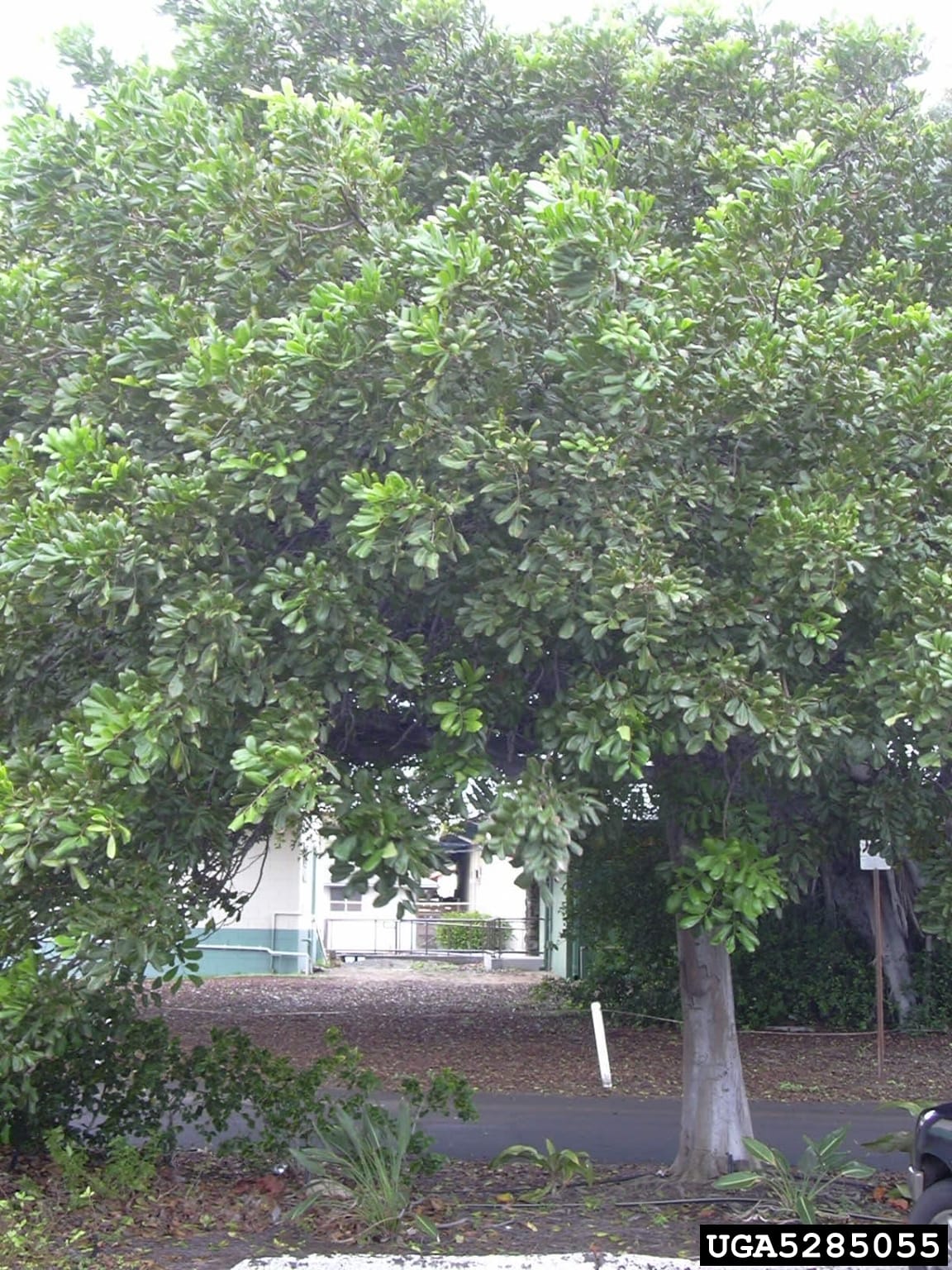This guide explores the captivating Carrotwood tree, from its ornamental beauty and versatile uses to its potential invasiveness and responsible management. We’ll delve into its growth habits, care requirements, and ecological impact, providing a comprehensive overview of this complex and controversial tree.
Unveiling the Carrotwood: An Overview
Carrotwood (Cupaniopsis anacardioides), native to Australia, is an evergreen tree prized for its lush green foliage, vibrant orange fruits, and rapid growth. Its adaptability and low-maintenance nature have made it a popular choice in landscaping, but its invasive potential in certain regions requires careful consideration. This section provides a balanced perspective, highlighting both the alluring attributes and potential downsides of cultivating Carrotwood.
From Australia to Your Backyard: Understanding Carrotwood’s Origins
Originally hailing from eastern and northern Australia, Carrotwood thrives in warm climates and well-drained soil, often found in coastal regions, hilly scrub, and even littoral rainforests. Its smooth, gray bark conceals a surprising orange layer underneath, adding to its unique appeal. The leathery, deep green leaves and clusters of bright orange berries containing small black seeds further contribute to its distinctive appearance. Birds play a significant role in dispersing these seeds, which contributes to the tree’s potential for widespread growth.
Cultivating Carrotwood: Tips and Considerations
Carrotwood’s ease of cultivation makes it appealing to gardeners of all skill levels. However, its rapid growth and prolific seed production require careful monitoring and management, especially in areas where it is known to be invasive.
Growing Carrotwood: A Gardener’s Guide
Providing ample sunlight and well-draining soil is key to successfully growing Carrotwood. While it’s relatively low-maintenance, regular pruning helps maintain its shape and prevents it from becoming overly large. Though it can be grown from seed, seedlings often sprout spontaneously due to bird dispersal.
The Invasive Nature of Carrotwood: A Growing Concern
Carrotwood’s vigor can become problematic in certain climates, particularly in regions like Florida, where it has been classified as an invasive species. Its rapid growth and prolific seed production allow it to outcompete native plants, disrupting local ecosystems and potentially forming monocultures. Therefore, careful consideration is crucial before planting Carrotwood, especially in regions susceptible to its invasive tendencies.
Responsible Landscaping with Carrotwood: Balancing Act
In areas where Carrotwood is considered invasive, opting for native alternatives is recommended. Numerous aesthetically pleasing native species offer similar beauty without posing ecological risks. For those residing in suitable climates, responsible management practices, including regular pruning and monitoring for seedlings, are crucial to prevent unwanted spread.
Managing Existing Carrotwood: Strategies and Solutions
For existing Carrotwood trees exhibiting invasive behavior, several management strategies can be employed:
- Physical Removal: While effective, this can be labor-intensive, particularly for larger trees.
- Herbicide Application: Requires careful application to minimize harm to surrounding vegetation.
- Biological Controls: Research suggests exploring insects that specifically target Carrotwood, though this remains an area of ongoing study.
The Many Faces of Carrotwood: Uses and Benefits
Beyond its ornamental appeal, Carrotwood offers a surprising range of uses, demonstrating its remarkable versatility.
Recommended Titles & Key Lines
Title Options:
- Carrotwood Tree Uses: Beyond Landscaping & Invasive Nature Truth
- The Complete Carrotwood Tree Guide & Controversy
- Unlocking Carrotwood Tree Potential: From Furniture to Wildlife
Key Information Takeaways:
- Carrotwood’s versatility extends from furniture to wildlife havens, despite its invasive nature.
- Discover surprising potential: its durable wood is prized for carving and turning from furniture to its foliage creating valuable habitat.
- Carrotwood’s adaptable make it suitable for landscapers, but its invasive behavior requires caution and responsible planting.
- Known for its beauty, Carrotwood provides local wildlife food and shelter.
Carrotwood’s Role in the Ecosystem
Carrotwood serves as an important part of its ecosystem, due to its foliage and fruit production.
Furniture Making: Sturdy and Stylish
Carrotwood’s strong, durable wood makes it suitable for crafting furniture. Its appealing texture lends itself well to carving and turning, often used in decorative applications like intricate table legs or bedposts.
Landscaping Applications: Beyond Beauty
Its fast growth, adaptability to various soil conditions, and attractive foliage make Carrotwood a popular choice for landscapers. It contributes to urban greening projects, introducing greenery into cityscapes. While it provides some shade, it’s not considered a true shade tree.
Wildlife Habitat: Providing Shelter and Sustenance
Carrotwood contributes to biodiversity by offering food and shelter for various creatures. Birds nest in its dense foliage, its flowers attract pollinators including bees and butterflies, and its fruit provides food for small mammals and birds.
Addressing the Drawbacks: Toxicity, Messiness, and Root Systems
Carrotwood trees do have drawbacks. Its fruit may be toxic, making it dangerous if consumed. The fallen fruit also becomes messy, requiring regular cleaning. The trees’ roots can be invasive, potentially damaging property.
The Ongoing Carrotwood Conversation: Research and Future Directions
Ongoing research continues to unravel the complexities of Carrotwood, including its invasive potential and management strategies. Climate change may exacerbate its spread, prompting further investigation into effective control methods.
Carrotwood Tree Uses: A Detailed Look
Table of Carrotwood Tree Uses, Details, & Potential Issues:
| Use | Details | Potential Issues |
|---|---|---|
| Furniture Making | Strong, durable, carvable, and turnable wood perfect for furniture use. | None |
| Landscaping | Fast growth, soil adaptability, and foliage make it suitable for landscapers and urban projects. | Invasive in some areas |
| Wildlife Habitat | Provides food and shelter for birds, insects, and mammals, increasing biodiversity. | Invasive in some areas |
Uncovering Hidden Potential: Current Research
Researchers are constantly exploring the benefits and drawbacks of Carrotwood trees, including its medicinal properties. The tree has a lot more to offer than meets the eye.
Pronouncing Cupaniopsis Anacardioides: A Simple Guide
Struggling with “Cupaniopsis Anacardioides”? It’s Koo-pan-nee-OP-sis an-nuh-kard-ee-OID-eez. This section simplifies the pronunciation of this scientific name, providing a phonetic breakdown for easy mastery.
Beyond the Name: Ecology and Impact
Cupaniopsis anacardioides, commonly known as Carrotwood, is a fascinating tree with a complex ecological story. While admired for its beauty and ease of care, its invasive potential requires careful management.
Recommended Titles & Key Information for Improved SEO
Title Options:
- Mastering Cupaniopsis Anacardioides (Tuckeroo) Pronunciation
- Cupaniopsis Anacardioides Pronunciation, Meaning, and More
- Cupaniopsis Anacardioides Pronunciation Guide for Nature Lovers
Key Information Takeaways:
- Koo-pan-nee-OP-sis an-nuh-kard-ee-OID-eez: Learn to say Cupaniopsis Anacardioides, an Australian native.
- Explore the meaning of “anacardioides” and its connection to the cashew family, giving hints to its characteristics.
- Tuckeroo to Carrotwood: Learn the diverse names and history of Cupaniopsis Anacardioides.
- Invasive Beauty: Uncover Cupaniopsis Anacardioides’s identity as both a beloved and invasive tree.
Understanding Cupaniopsis Anacardioides
Cupaniopsis anacardioides has many names, from Carrotwood to Tuckeroo. It is native to Australia but has become invasive in other areas.
Responsible Gardening with Carrotwood: A Call for Awareness
Responsible gardening practices are crucial to mitigating Carrotwood’s invasive potential. Consulting local authorities and gardening experts provides valuable insights into suitable alternatives and management techniques.
Fertilizing Carrotwood Trees: A Practical Guide
This section delves into the best fertilizing practices for Carrotwood, ensuring healthy growth while minimizing environmental impact.
Nourishing Your Carrotwood: Fertilizer Recommendations
A slow-release, granular 16-6-12 NPK fertilizer is generally recommended for Carrotwood trees. Nitrogen promotes foliage growth, phosphorus supports root development, and potassium contributes to overall plant health. Adjust the ratio based on your soil’s nutrient content, determined via soil testing.
Recommended Titles & Key Information for Improved SEO
Title Options:
- Carrotwood Tree Fertilizer & Care Guide
- Unlocking Lush Carrotwood Growth: Fertilizing Tips
- Carrotwood Tree Fertilizing: Expert Tips for a Thriving Landscape
Key Information Takeaways:
- Targeted Fertilization for Carrotwood Tree Growth: Slow-release fertilizer improves Carrotwood vibrancy, especially in poor soils.
- Customizable Carrotwood Fertilizer: While 16-6-12 NPK fertilizer is recommended, young trees benefit from high-nitrogen mixes. Adjust based on growth and soil.
- Holistic Carrotwood Care: Beyond fertilizer, sunlight, soil drainage, water, and a warm environment are crucial.
- Prevent Over-Fertilizing: Excessive amounts harm Carrotwood. Watch for leaf changes and adjust fertilizer use.
Avoiding Over-Fertilization: A Word of Caution
Over-fertilizing can harm Carrotwood, causing root burn and other problems. Adhere to package instructions and adjust application based on the tree’s growth and soil conditions. Regular monitoring is crucial to prevent nutrient burn and ensure optimal health. Signs of over-fertilization include leaf discoloration and wilting.
Beyond Fertilizer: Holistic Care Tips
While fertilizer is essential, other factors contribute to Carrotwood’s well-being:
- Sunlight: Ample sunlight is vital.
- Water: Consistent watering, especially during dry periods, is important, but avoid overwatering, which can lead to root rot.
- Soil: Well-draining soil is critical.
- Climate: Carrotwood thrives in warm, humid environments.
choriaster granulatus. antony starr.
- Discover Long Black Pepper: Flavor & Health Benefits - April 25, 2025
- Shocking Twists: The Grownup Review: Unreliable Narration - April 25, 2025
- A Quiet Place Book vs Movie: A Deep Dive - April 25, 2025
















